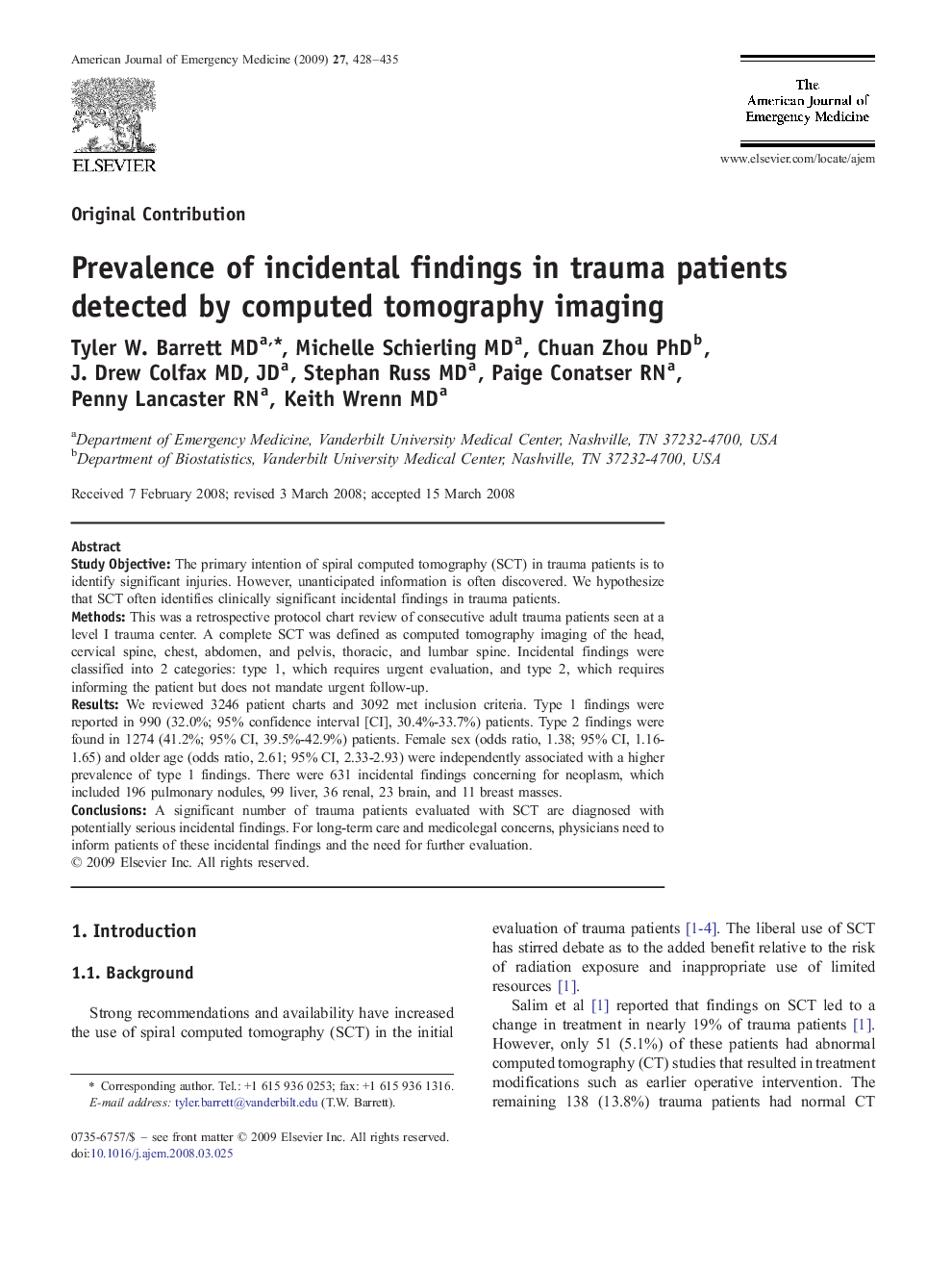| کد مقاله | کد نشریه | سال انتشار | مقاله انگلیسی | نسخه تمام متن |
|---|---|---|---|---|
| 3227261 | 1588167 | 2009 | 8 صفحه PDF | دانلود رایگان |

Study ObjectiveThe primary intention of spiral computed tomography (SCT) in trauma patients is to identify significant injuries. However, unanticipated information is often discovered. We hypothesize that SCT often identifies clinically significant incidental findings in trauma patients.MethodsThis was a retrospective protocol chart review of consecutive adult trauma patients seen at a level I trauma center. A complete SCT was defined as computed tomography imaging of the head, cervical spine, chest, abdomen, and pelvis, thoracic, and lumbar spine. Incidental findings were classified into 2 categories: type 1, which requires urgent evaluation, and type 2, which requires informing the patient but does not mandate urgent follow-up.ResultsWe reviewed 3246 patient charts and 3092 met inclusion criteria. Type 1 findings were reported in 990 (32.0%; 95% confidence interval [CI], 30.4%-33.7%) patients. Type 2 findings were found in 1274 (41.2%; 95% CI, 39.5%-42.9%) patients. Female sex (odds ratio, 1.38; 95% CI, 1.16-1.65) and older age (odds ratio, 2.61; 95% CI, 2.33-2.93) were independently associated with a higher prevalence of type 1 findings. There were 631 incidental findings concerning for neoplasm, which included 196 pulmonary nodules, 99 liver, 36 renal, 23 brain, and 11 breast masses.ConclusionsA significant number of trauma patients evaluated with SCT are diagnosed with potentially serious incidental findings. For long-term care and medicolegal concerns, physicians need to inform patients of these incidental findings and the need for further evaluation.
Journal: The American Journal of Emergency Medicine - Volume 27, Issue 4, May 2009, Pages 428–435